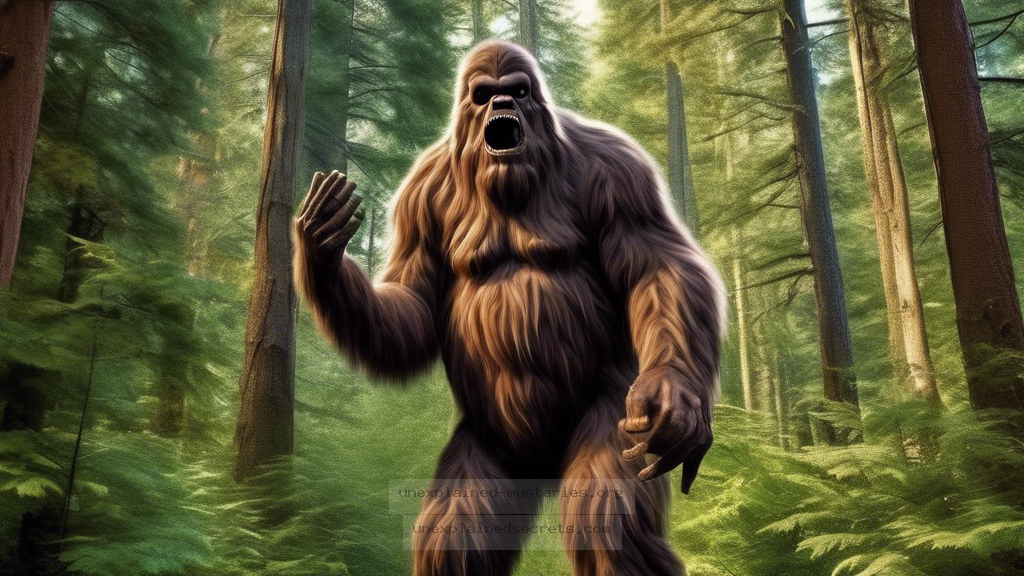What are the Most Compelling Pieces of Evidence Supporting the Existence of Bigfoot?
What are the Most Compelling Pieces of Evidence Supporting the Existence of Bigfoot?
The existence of Bigfoot, or Sasquatch, has fascinated and puzzled both enthusiasts and skeptics for decades. With countless sightings, audio recordings, and even alleged physical evidence, the question of whether this elusive creature truly roams the wilderness remains open. This inquiry is crucial not only for cryptozoologists but also for anthropologists, biologists, and anyone intrigued by humanity’s relationship with nature. In this post, we will explore various pieces of compelling evidence that support the existence of Bigfoot, analyzing each through a critical lens.
Historical Context of Bigfoot Sightings
The first recorded sightings of what could be considered Bigfoot date back centuries, with Native American tribes across North America sharing stories of large, hairy creatures that inhabit the forests. These tales often describe beings with incredible strength and a human-like appearance, which have been handed down through generations. In more recent history, the term “Bigfoot” became popularized in the 1950s, coinciding with a surge in reported sightings. The 1967 Patterson-Gimlin film, which allegedly captured Bigfoot in the Bluff Creek area of California, is one of the most famous pieces of evidence. This film has been scrutinized endlessly, yet many still argue that it remains the closest proof of Bigfoot’s existence.
Notable Sightings and Encounters
Many reported sightings of Bigfoot have garnered attention due to their detailed descriptions and the credibility of the witnesses. For instance, the 2008 sighting by a group of hikers in the forests of Washington state described a massive creature crossing their path, standing over 7 feet tall and covered in dark fur. The hikers reported an overwhelming sense of awe and fear, which they described as being instilled by the creature’s presence.
Another notable encounter occurred in 1994 when a group of researchers in the Six Rivers National Forest heard strange vocalizations that they could not identify. These sounds were later analyzed and compared to known animal calls, yet no matches were found. Such accounts contribute to the growing body of anecdotal evidence supporting the existence of Bigfoot.
Physical Evidence: Hair, Footprints, and More
Physical evidence is often the most compelling aspect of the Bigfoot mystery. One of the most discussed pieces of evidence is the collection of alleged Bigfoot hair samples. In 2014, a study published in the journal “Cryptozoology” examined hair samples from different regions, some of which showed unique genetic markers not found in known animals. While the results were inconclusive, they sparked renewed interest in the possibility of an undiscovered primate species.
Additionally, numerous footprints have been discovered across North America. These tracks often measure over 15 inches in length and exhibit features that do not correspond to any known animal. Investigators have used plaster casts to create molds of these prints, leading to a fascinating analysis of their size and depth. Many enthusiasts argue that these characteristics suggest a creature much larger than humans.
Audio Evidence: The Sounds of Bigfoot
Audio recordings of alleged Bigfoot vocalizations have also created a stir among researchers and enthusiasts alike. One of the most famous recordings, known as the “Sierra Sounds,” was captured in the early 1970s by Ron Morehead and his team while they were on an expedition in the Sierra Nevada mountains. The recordings feature a series of howls, whoops, and grunts that have been analyzed by sound experts, some of whom claim these sounds are unlike any known animal. The debate about their authenticity continues, as skeptics argue they could be human-made or natural sounds.
Scientific Studies and Surveys
In recent years, several scientific studies have attempted to investigate the existence of Bigfoot using modern technology and methodologies. In 2019, a research team led by Dr. Jeff Meldrum, a primate biologist, conducted a survey of various locations known for Bigfoot sightings. They used advanced techniques, including thermal imaging and wildlife cameras, to gather data on the potential presence of large, unidentified creatures. While the study did not yield definitive proof of Bigfoot, it highlighted the importance of continuing scientific inquiry into the phenomenon.
Notable Hoaxes and Misconceptions
Despite the compelling evidence, the Bigfoot phenomenon is rife with hoaxes and misconceptions that have clouded the issue. One of the most infamous hoaxes was the 2008 “Bigfoot body” incident, where two men claimed to have discovered a frozen Bigfoot carcass, only to later reveal that it was a costume. Such instances contribute to the skepticism surrounding the existence of Bigfoot, leading many to dismiss legitimate evidence in the process.
Comparative Analysis: Bigfoot vs. Other Cryptids
When discussing Bigfoot, it’s useful to compare it to other well-known cryptids such as the Loch Ness Monster or the Chupacabra. Each of these creatures has its own set of evidence, folklore, and scientific scrutiny. Bigfoot, unlike many other cryptids, is often associated with large, unexplored wilderness areas, making it plausible for such a creature to exist undetected. However, while other cryptids often lack physical evidence, many claimed Bigfoot sightings include tangible proof like footprints and hair samples, offering a unique perspective on the phenomenon.
| Cryptid | Type | Evidence Type | Habitat |
|---|---|---|---|
| Bigfoot | Large bipedal ape | Footprints, hair samples, audio | Forested areas of North America |
| Loch Ness Monster | Large aquatic creature | Photographs, sonar readings | Loch Ness, Scotland |
| Chupacabra | Blood-sucking creature | Animal carcasses, eyewitness accounts | Latin America, southern USA |
Best Practices for Investigating Bigfoot
For those interested in conducting their own investigations into Bigfoot, there are several best practices to consider. Firstly, it is essential to approach the subject with an open mind while remaining skeptical of unverified claims. Using technology, such as thermal cameras or audio recording devices, can enhance the chances of capturing evidence. Additionally, collaborating with experts in wildlife tracking and sound analysis can provide valuable insights into any findings.
Joining established research groups can also be beneficial, as they often have resources and experience that can guide investigations. Lastly, maintaining thorough documentation of all findings, including location data, weather conditions, and witness accounts, is crucial for future analysis.
Future Developments in Bigfoot Research
As technology advances, the potential for discovering new evidence of Bigfoot continues to grow. Recent developments in genetic analysis and wildlife tracking software may open new avenues for research. The use of environmental DNA (eDNA) sampling, which allows researchers to analyze genetic material from soil or water samples, could provide insights into the presence of unknown species in various ecosystems.
Furthermore, the rise of citizen science initiatives encourages amateur researchers to contribute to the field. These efforts can lead to more comprehensive data collection, increasing the chances of substantiating the existence of Bigfoot.
Conclusion: The Quest for Bigfoot
The question of whether Bigfoot exists remains one of the most intriguing mysteries in cryptozoology. While compelling evidence exists—from eyewitness accounts and physical traces to audio recordings—none have provided definitive proof of this elusive creature. The historical context, ongoing scientific research, and the community’s passion for the subject contribute to this enigma. As technology and methodologies evolve, the quest for Bigfoot may yield new discoveries that either confirm its existence or further deepen the mystery. Regardless, the fascination with Bigfoot will likely endure, inviting curious minds to explore the unexplained corners of our world.
Other Articles
Recent Posts
- What Happened to Flight MH370? The Conspiracy Theories That Still Haunt Us
- What Secrets Lurk Within the Walls of the Infamous Trans-Allegheny Lunatic Asylum?
- What Evidence Supports the Existence of Bigfoot in the Pacific Northwest?
- What Happened to the Indus Valley Civilization? Unraveling the Mysteries of Ancient Urban Life
- Can Telepathy Be Scientifically Proven Through Laboratory Evidence?







